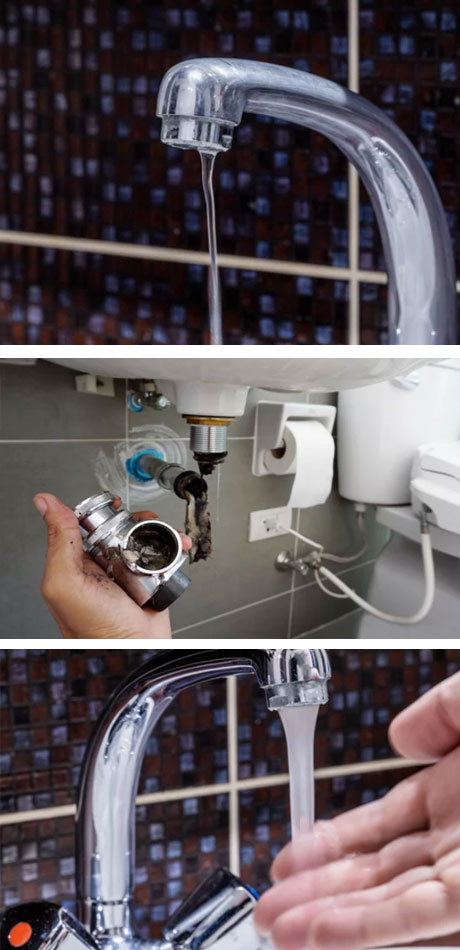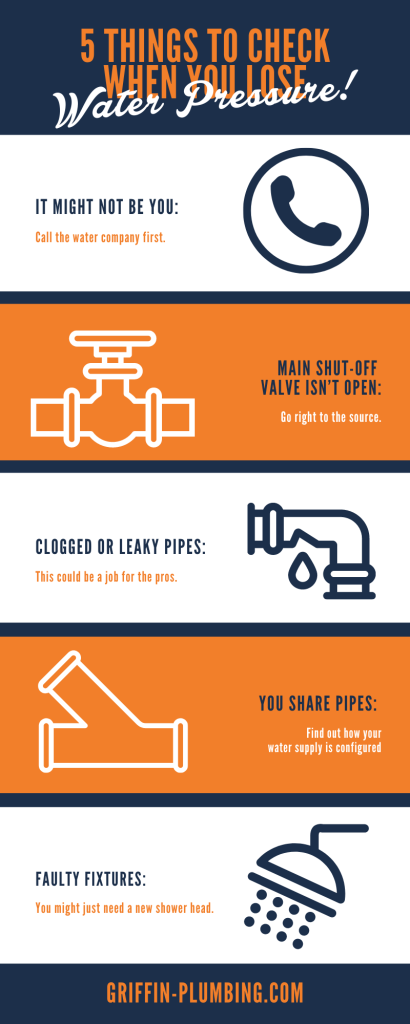

Water pressure suddenly dropping can be incredibly frustrating, disrupting daily routines and potentially causing more significant plumbing issues. Imagine the inconvenience of a sputtering shower head, a weak faucet, or a slow-draining sink
What if there’s a simple solution hiding in plain sight? This comprehensive guide will delve into the common causes of a sudden water pressure drop and equip you with the knowledge to diagnose and fix the problem. We’ll explore everything from the most frequently encountered clogs to potentially hidden leaks and faulty components, offering actionable steps for immediate relief. Let’s dive into the world of plumbing troubles and restore your water flow to its optimal level.
Understanding the Significance of Stable Water Pressure
The Importance of Consistent Water Pressure
Consistent water pressure is essential for everyday tasks, from taking a shower to doing laundry. Irregular pressure fluctuations can significantly impact water usage efficiency and create a frustrating user experience. A sudden drop in pressure often signals an underlying issue that needs immediate attention.
Impacts on Daily Life and Appliances
Reduced water pressure can inconvenience daily routines by affecting water-dependent activities. For instance, low water pressure can lead to inadequate water supply for dishwashing and laundry, potentially leading to time-consuming and less efficient cycles. In extreme cases, low pressure can disrupt sanitation facilities, rendering water for flushing toilets insufficient or unreliable. The impact on appliance performance is another concern. This can lead to increased water usage and increased energy consumption in an attempt to meet the demand. Water pressure issues also directly affect water heater functionality. Low pressure will create a greater strain on the heating elements, potentially reducing heating efficiency.
Clogged Pipes: A Common Culprit
Identifying Clogs
One of the most common culprits behind a sudden drop in water pressure is a clogged pipe. These clogs can develop gradually over time, starting with mineral deposits or debris buildup. For example, insufficient flushing can lead to more mineral build-up in the lines over time, leading to obstructions.
Addressing Clogs
The solution to unclogging pipes often lies in using appropriate cleaning tools. Specialized plumbing tools are available for dealing with clogs in specific areas, like a slow drain or a fixture. Professional tools can be used for more extensive issues that may require a more significant approach, such as when the problem is further down the line.
Prevention Tips
Regular maintenance is key to preventing clogs. Using appropriate filters can prevent debris from entering the system. Proper water usage habits, including minimizing harsh chemicals that can create clogs or blockages, can significantly reduce the risk of future problems. Ensuring the right amount of flushing, particularly in the case of hard water, can also help prevent build-up.
Leaks: The Hidden Threat to Water Pressure
Identifying Leaks
A hidden leak, whether in a pipe or a fixture, can significantly reduce water pressure, even when you might not immediately suspect a leak.
Diagnosing the Source of Leaks
Identifying the source of a leak can sometimes be a challenge. In many cases, visual inspections alone might not be sufficient. The presence of moisture, dampness, or unusual water stains is a good indicator. Using a pressure gauge can help in cases where a leak is in an area that is hard to visualize.
Repair Strategies
Once identified, addressing a leak is essential to restore water pressure. Quick and efficient repairs are crucial to minimize damage and prevent potential water damage to the surrounding areas. Addressing leaks as soon as possible can minimize the impact of the resulting problems. In cases of major leaks, professional help is highly recommended.
Faulty Water Heater Issues
Identifying Water Heater Problems
A faulty or malfunctioning water heater can also lead to a sudden drop in water pressure. Problems such as corroded or restricted water flow components can impede water flow. A diminished supply of hot water can also indicate a water heater issue.
Diagnosing the Issue
Diagnosing the issue requires a systematic approach. Inspecting the pressure gauge on the water heater for proper readings is a good starting point. Assessing the water heater’s thermostat to ensure proper functionality. These approaches will often determine the root cause of the issue.
Solutions
Addressing faulty water heaters necessitates professional intervention in most cases. Repair or replacement options are available. A certified technician should be consulted to determine the most appropriate solution.
Other Potential Causes
Air in the Pipes
Air pockets trapped in the pipes can reduce water flow, resulting in lower water pressure. These pockets can form when water flow is reduced.
Valve Malfunctions
Faulty or malfunctioning valves, such as shutoff valves, can impede water flow, causing a sudden drop in water pressure. Check valves regularly. Valves may need to be replaced.
Service Issues
In some cases, the water pressure drop might be due to broader issues in the water supply network or service line, which requires intervention beyond your control. Check local news or utilities. Contacting your water supplier if you suspect this is the case is important.
In conclusion, a sudden drop in water pressure can stem from various plumbing issues, ranging from minor clogs to more significant problems like leaks or faulty components. By systematically investigating potential causes, homeowners can effectively troubleshoot and restore optimal water pressure. Regular maintenance, like checking for leaks and ensuring proper water heater function, plays a crucial role in preventing future issues and maximizing water efficiency. For immediate assistance or a more detailed assessment, consulting a qualified plumber is highly recommended. Don’t hesitate to contact a professional if you suspect severe issues with your water pressure; early intervention often prevents more extensive damage and saves you money in the long run.